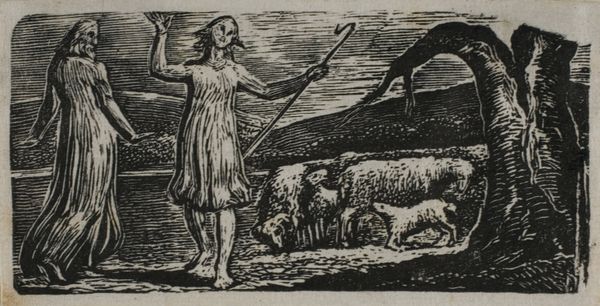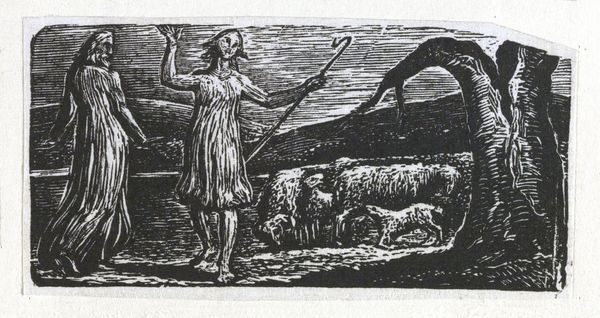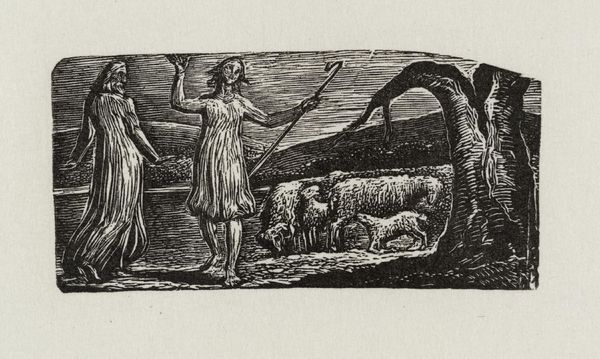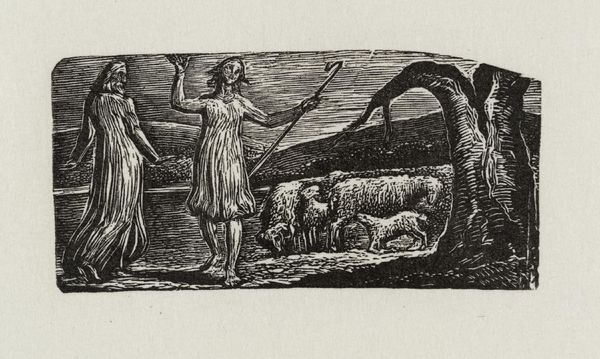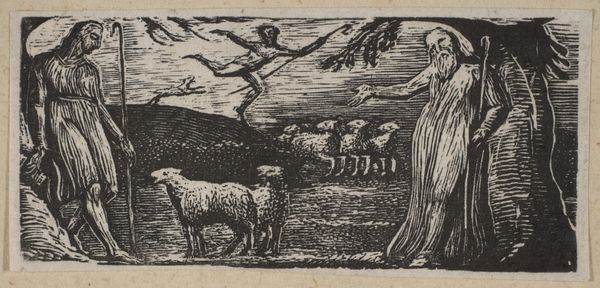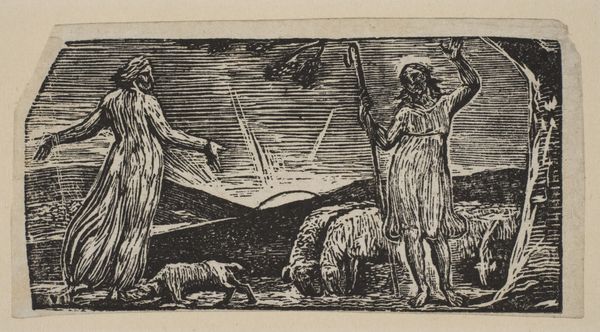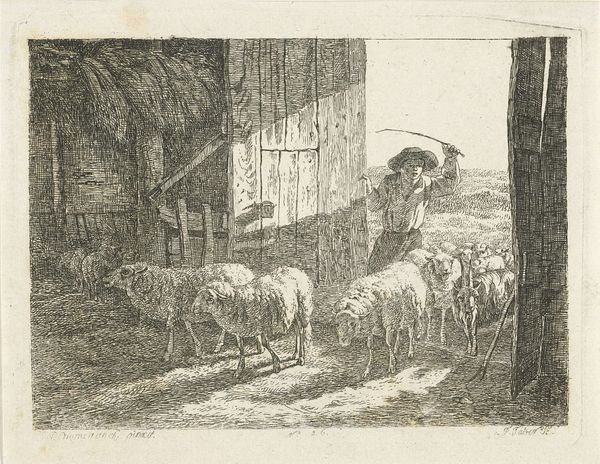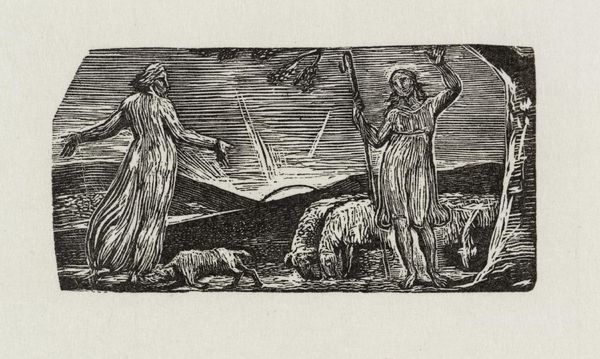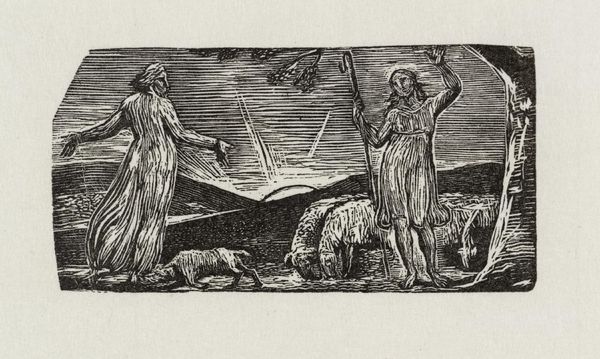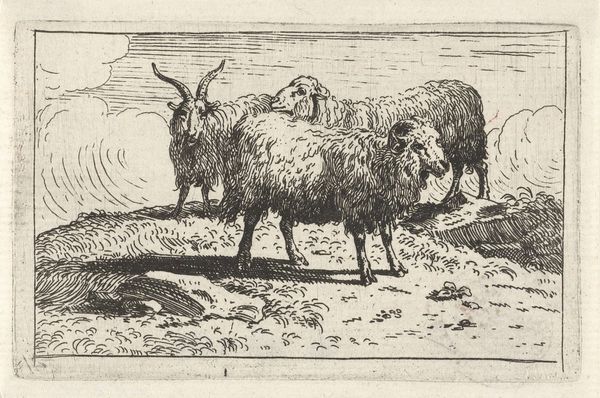
print, engraving
#
narrative-art
# print
#
pen illustration
#
landscape
#
figuration
#
romanticism
#
pen-ink sketch
#
sketchbook drawing
#
engraving
Dimensions: height 35 mm, width 75 mm
Copyright: Rijks Museum: Open Domain
Editor: So this is William Blake's engraving, "Colinet vertrekt droeviggestemd," made between 1820 and 1821. It depicts figures in a landscape, and there’s this undeniable feeling of melancholy and departure that really sticks with me. What do you see in this piece? Curator: Beyond the surface melancholy, I see Blake wrestling with societal structures and pastoral ideals. Notice how the figures, perhaps representing idealized shepherds, are rendered with a starkness that disrupts traditional romanticized notions of rural life. Editor: It’s true, they don't exactly fit the "happy shepherd" trope. Their faces almost look… haunted? Curator: Exactly! This hints at the potential exploitation inherent in pastoral systems and, metaphorically, in hierarchical social structures. Who benefits from these idyllic images, and at what cost? What power dynamics might Blake be challenging? Editor: I guess I never considered the power dynamics in shepherd imagery, but that's a great point. Could his choice of engraving as a medium also be relevant? Curator: Absolutely. Engraving, a medium often used for reproduction and dissemination, becomes a tool for Blake to critique the very systems that propagate idealized versions of reality, much like the unequal dissemination of images across society. Editor: That's fascinating. So, this "departure" could be interpreted as a departure from established norms, too? Curator: Precisely! And the 'sadness' underscores the painful necessity of such departures. Consider who this image might be speaking to - are they among the shepherds who are forced to 'depart'? The engraving medium serves both to portray and democratize these challenges of tradition and its effect on certain people. Editor: This makes me look at Blake and Romanticism in a whole new light! I definitely need to delve deeper into the socio-political contexts of that period. Curator: Indeed. It is important to analyze these powerful pieces in historical and contemporary lights. Remember to analyze visual representation through its original social constructs, and it will begin speaking for itself.
Comments
No comments
Be the first to comment and join the conversation on the ultimate creative platform.
